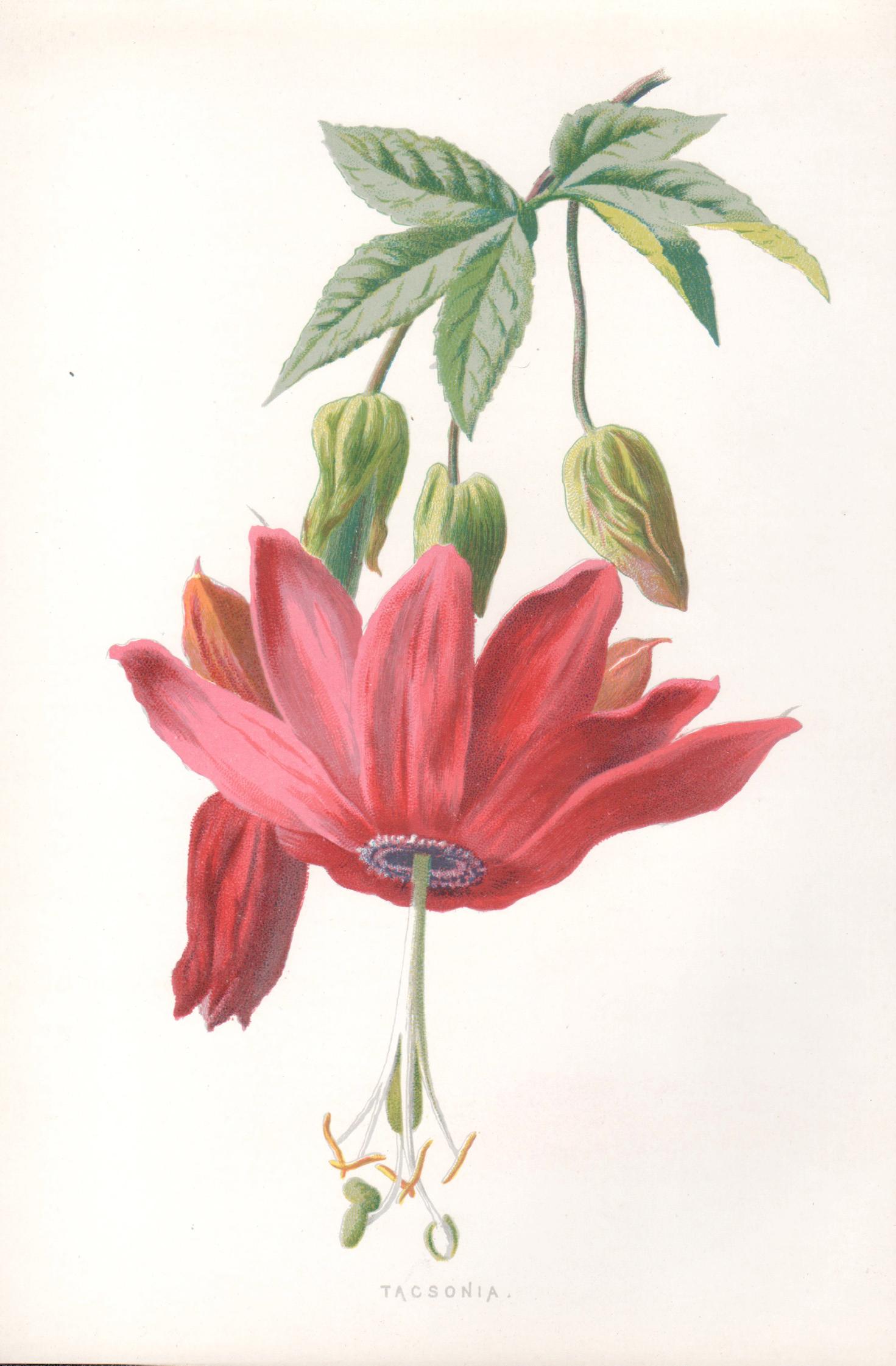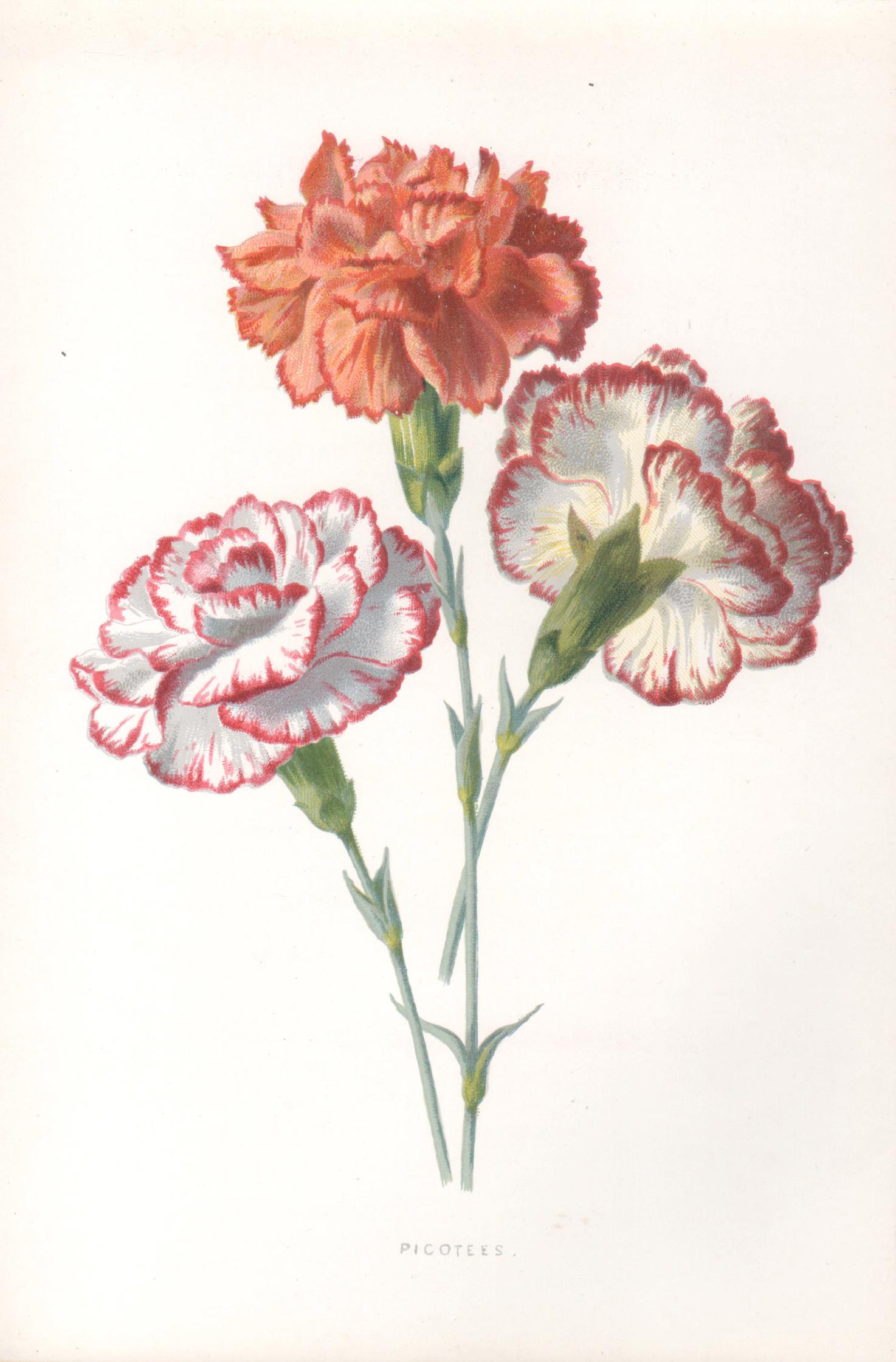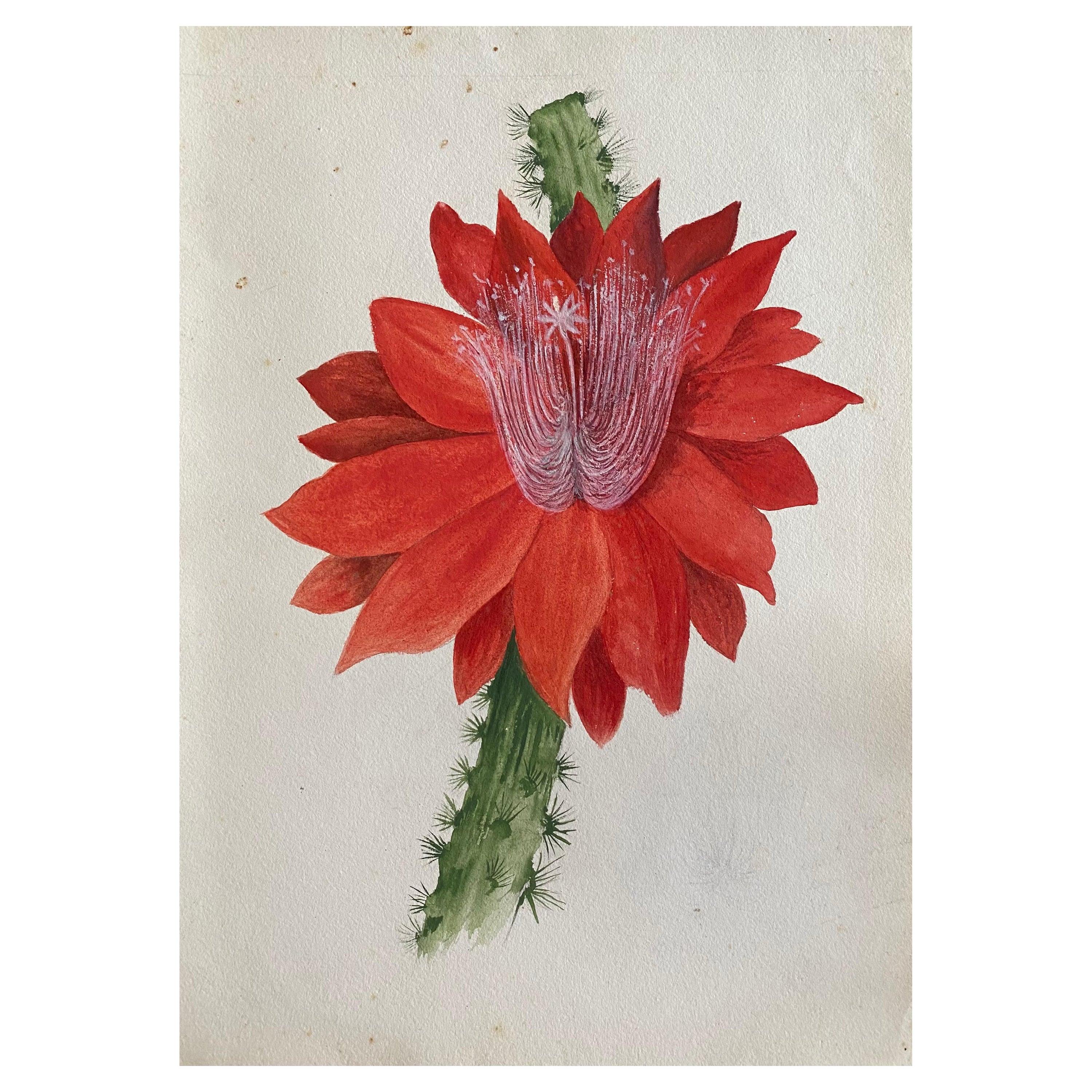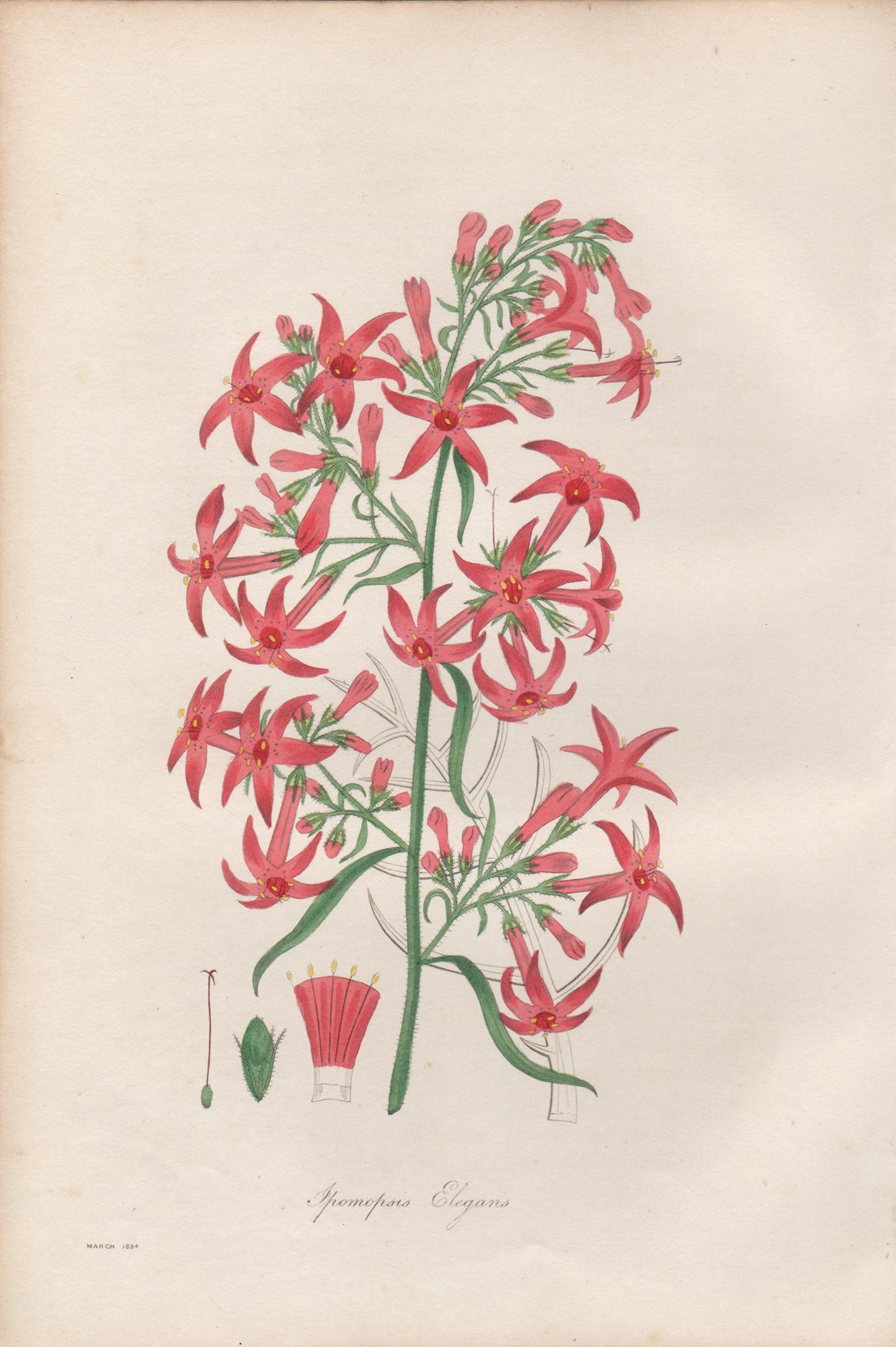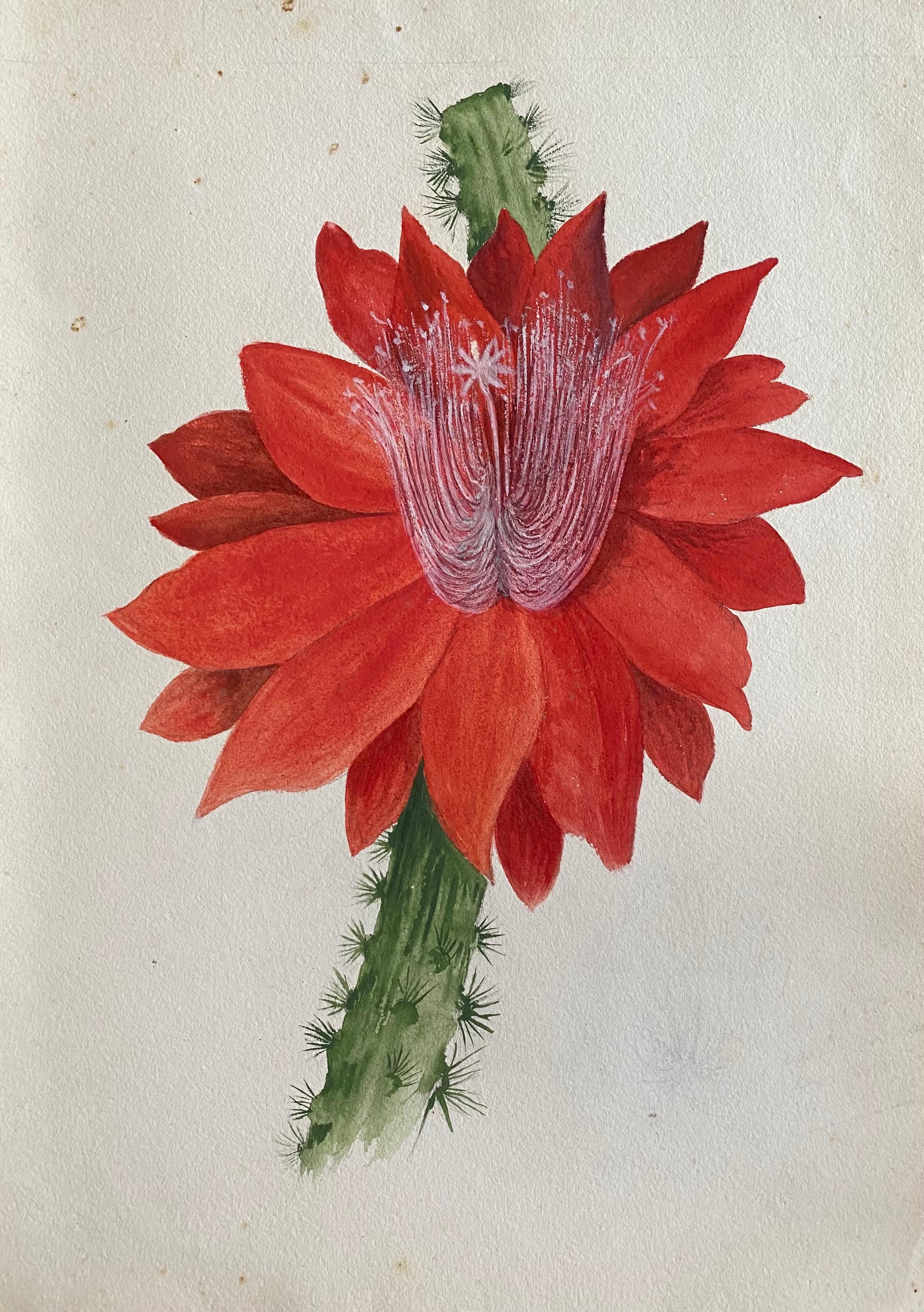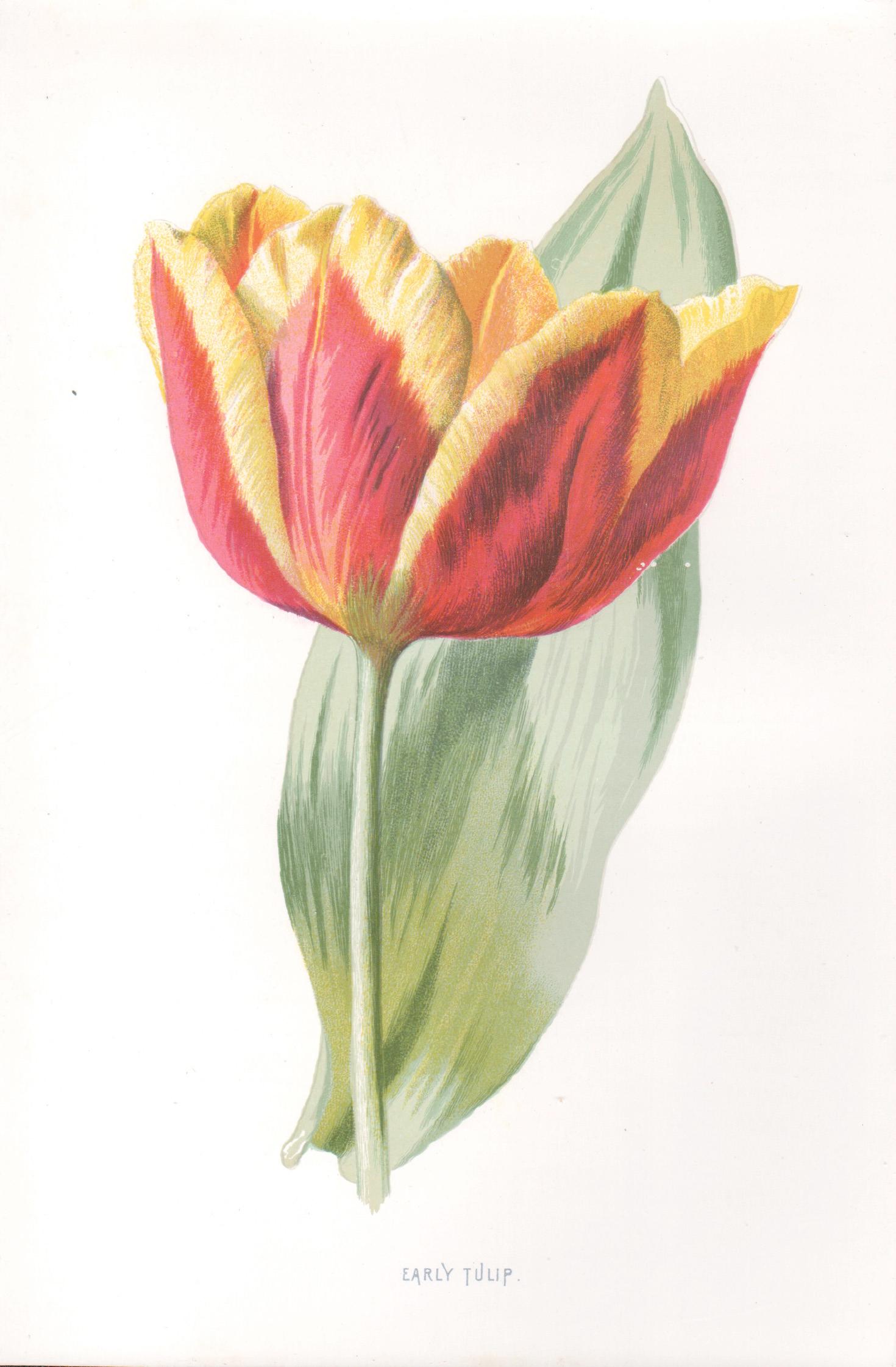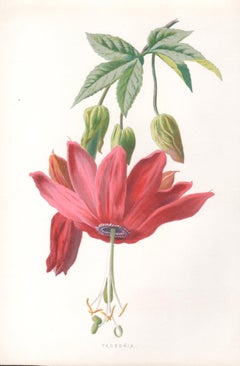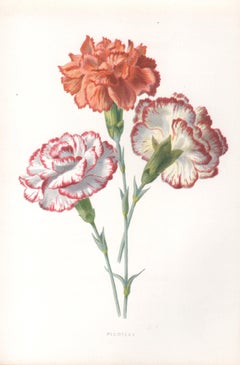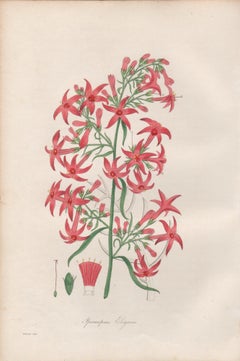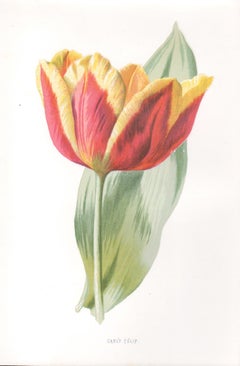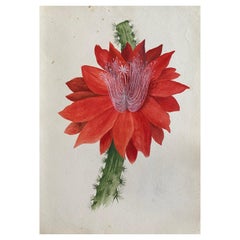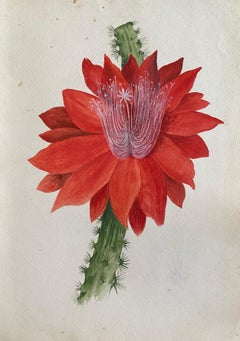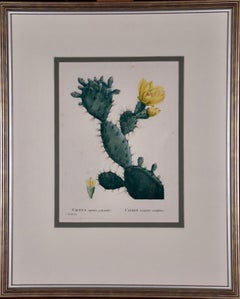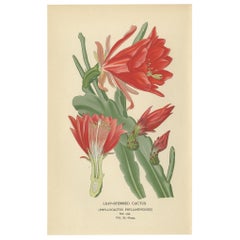Items Similar to Cactus, English antique red flower botanical chromolithograph, 1895
Want more images or videos?
Request additional images or videos from the seller
1 of 3
Cactus, English antique red flower botanical chromolithograph, 18951895
1895
$35
£26.55
€30.44
CA$49.86
A$54.11
CHF 28.47
MX$657.44
NOK 356.44
SEK 335.62
DKK 227.32
About the Item
'Cactus'
Process print from Frederick William Hulme’s ‘Familiar Wild Flowers’, circa 1890.
Hulme was known as a teacher and an amateur botanist. He was the Professor of Freehand and Geometrical Drawing at King’s College London from 1886. His most famous work was Familiar Wild Flowers.
Antique English flower botanical chromolithograph on semi gloss paper.
- Creation Year:1895
- Dimensions:Height: 7.49 in (19 cm)Width: 4.93 in (12.5 cm)
- Medium:
- Movement & Style:
- After:Frederick William Hulme (1816 - 1884, British)
- Period:
- Condition:
- Gallery Location:Melbourne, AU
- Reference Number:1stDibs: LU1244215241802
About the Seller
5.0
Platinum Seller
Premium sellers with a 4.7+ rating and 24-hour response times
Established in 2005
1stDibs seller since 2019
614 sales on 1stDibs
Typical response time: <1 hour
- ShippingRetrieving quote...Shipping from: Melbourne, Australia
- Return Policy
Authenticity Guarantee
In the unlikely event there’s an issue with an item’s authenticity, contact us within 1 year for a full refund. DetailsMoney-Back Guarantee
If your item is not as described, is damaged in transit, or does not arrive, contact us within 7 days for a full refund. Details24-Hour Cancellation
You have a 24-hour grace period in which to reconsider your purchase, with no questions asked.Vetted Professional Sellers
Our world-class sellers must adhere to strict standards for service and quality, maintaining the integrity of our listings.Price-Match Guarantee
If you find that a seller listed the same item for a lower price elsewhere, we’ll match it.Trusted Global Delivery
Our best-in-class carrier network provides specialized shipping options worldwide, including custom delivery.More From This Seller
View AllTacsonia, English antique pink flower botanical chromolithograph, 1895
By Frederick William Hulme
Located in Melbourne, Victoria
'Tacsonia'
Process print from Frederick William Hulme’s ‘Familiar Wild Flowers’, circa 1890.
Hulme was known as a teacher and an amateur botanist. He was the Professor of Freehand ...
Category
Late 19th Century Naturalistic Still-life Prints
Materials
Lithograph
Picotees, English antique red flower botanical chromolithograph, 1895
By Frederick William Hulme
Located in Melbourne, Victoria
'Picotees'
Process print from Frederick William Hulme’s ‘Familiar Wild Flowers’, circa 1890.
Hulme was known as a teacher and an amateur botanist. He was the Professor of Freehand ...
Category
Late 19th Century Naturalistic Still-life Prints
Materials
Lithograph
Ipomopsis Elegans, antique botanical red flower engraving
Located in Melbourne, Victoria
Engraving with original hand-colouring. 1834. 230mm by 155mm. From Paxton's 'Magazine of botany and register of flowering plants' by Sir Joseph Paxton.
Category
Mid-19th Century Naturalistic More Prints
Materials
Engraving
Early Tulip, English antique red flower botanical chromolithograph, 1895
By Frederick William Hulme
Located in Melbourne, Victoria
'Tacsonia'
Process print from Frederick William Hulme’s ‘Familiar Wild Flowers’, circa 1890.
Hulme was known as a teacher and an amateur botanist. He was the Professor of Freehand ...
Category
Late 19th Century Naturalistic Still-life Prints
Materials
Lithograph
Lapagerias & Passiflora, English antique flower botanical chromolithograph, 1896
Located in Melbourne, Victoria
'Lapagerias and Passiflora'
Flowers are numbered with a key to the varieties below the image.
Antique English flower botanical chromolithograph.
Category
Late 19th Century Naturalistic Still-life Prints
Materials
Lithograph
Streptosolon, English antique flower botanical chromolithograph, 1896
Located in Melbourne, Victoria
'1. Streptosolon Jamesoni 2. Leschenaultia Biloba Major'
Flowers are numbered with a key to the varieties below the image.
Antique English flower botanical chromolithograph.
Category
Late 19th Century Naturalistic Still-life Prints
Materials
Lithograph
You May Also Like
Fine Antique British Botannical Watercolour Painting, circa 1900's Red Flower
Located in Cirencester, Gloucestershire
A very fine original antique English botanical watercolour painting depicting this beautiful depiction of a flower/ plant. The work came to us from a private collection in Surrey, En...
Category
Early 20th Century Victorian Still-life Drawings and Watercolors
Materials
Acrylic
Fine Antique British Botannical Watercolour Painting, circa 1900's Red Flower
Located in Cirencester, Gloucestershire
A very fine original antique English botanical watercolour painting depicting this beautiful depiction of a flower/ plant. The work came to us from a private collection in Surrey, En...
Category
Early 20th Century Victorian Still-life Paintings
Materials
Watercolor
Flowering Prickly Pear Cactus: Framed 18th C. Hand-colored Engraving by Redoute
By Pierre-Joseph Redouté
Located in Alamo, CA
This is a hand-colored stipple engraving entitled "Cactus Opuntia Polyanthos, Cierge Raquette Multiflore" (Prickly Pear Cactus) by Pierre-Joseph Redouté, Plate 59 from his illustrated publication 'Plantarum Historia Succulentarum ou Histoire des Plantes Grasses', published in Paris in 1799. Redoute was a pioneer of the stipple engraving technique, which he used to create this image. It involves utilizing a series of small dots worked into a copper plate rather than the more common lines. These dots can be made smaller or thicker depending on the degree of opacity the artist intends for various areas of the print. When inked and applied to paper, this allows for a greater portion of the paper to be seen, which accentuates the appearance of luminosity of the subject the artist is creating. Different color inks are used in the printing process, a time consuming technique known as "a la poupee". The engraving is then finished with watercolor to further enhance the beauty and realism of the print subject.
This engraving of a flowering cactus is presented in a double mat; white outer mat and heather green inner mat.The mat measures 20" x 16" and the sheet measures 19.5" x 13.38". There are wide margins with a few short tears and chips along the the right and upper edges, which are all covered by the mat. There are small spots predominantly in the margins, but a few are present in the image area, but the print is otherwise in very good condition. There is another Redoute flowering cactus listed on 1stdibs, LU117326854582. The pair would make an attractive display grouping.
Pierre-Joseph Redouté (1759-1840), was a painter and botanist originally from Belgium, who pursued his extremely successful artistic career in France. He is well known for his watercolor paintings of roses, lilies and other flowers and their subsequent folio-sized, color stipple engravings. Some believe him to be the greatest botanical illustrator of all time. Redouté was a favorite of the French royal court at the time and of the post French...
Category
Late 18th Century Naturalistic Still-life Prints
Materials
Engraving
Stunning 1897 Leaf-Stemmed Cactus Print – Phyllocactus Illustration
Located in Langweer, NL
Title: Stunning 1897 Leaf-Stemmed Cactus Print – Phyllocactus Illustration
Description:
This beautiful antique botanical print, published in 1897, features the vividly illustrated **Leaf-Stemmed Cactus** (*Phyllocactus phyllanthoides*), capturing the striking red blossoms and intricate details of the plant’s lush green stems. Part of the renowned *Favourite Flowers of Garden and Greenhouse* series by Edward Step and edited by William Watson, assistant curator of the Royal Gardens at Kew, this print offers both historical charm and timeless botanical artistry.
The illustration stands out for its remarkable accuracy and naturalistic colors, evoking a sense of wonder about exotic plants cultivated in Victorian...
Category
Antique 1890s Prints
Materials
Paper
A Flowering Cactus Plant: 18th C. Hand-colored Botanical Engraving by Weinmann
By Johann Wilhelm Weinmann
Located in Alamo, CA
This hand-colored botanical mezzotint and line engraving by Johann Wilhelm Weinmann (1683-1741) is entitled "Cereus Erectus Altissimo Surinamensis (Cereus Cactus Plant)". It is plate...
Category
Mid-18th Century Naturalistic Still-life Prints
Materials
Engraving, Mezzotint
The Cacti - Lithograph by Vincenzo Tenore - 1870s
Located in Roma, IT
Lithograph hand watercolored.
Plate from "Atlante di Botanica popolare ossia Illustrazione di Piante Notevoli di ogni famiglia" (Atlas of popular botany or illustration of notable ...
Category
19th Century Modern Figurative Prints
Materials
Lithograph
More Ways To Browse
Donald Art Co Lithograph
Donald Baechler Rose
Elizabeth Osborne Poster
Gary Bukovnik Posters
Geraldine Girvan
Hugh Kepets On Sale
Japanese Botanical Prints
Lichtenstein Spray Can
Michelle Stuart On Sale
Mr Brainwash Flower
Oisin Byrne
Paris Review Posters
Paul De Longpre Vintage Prints
Robert Furber Twelve Months Of Flowers
Robert Furber
Thiebaud Signed Print
William Ross Abrams
Adele Alsop
